Challenge 1: Inclusive and integrated water resource management
Water as a catalyst for community integration.
R.E. Lab Team
Introduction
ndia is one of the developing economies with the highest rates of expansion (ODEPA, 2013). With the fast change of their economy and social needs there is a concern to address water management in an equitable manner, leaving no one behind.
The country counts with 16% of the World’s population, 2.4% of the World’s land area and 4% of the World’s fresh water resources (India-WRIS, n.d.). As the climate becomes less predictable because of climate change, keeping available water resource throughout the year represents a significant challenge for the community.
Even though, urban based development has thrived during capitalist era, the functionality of such system
has always relied on the rural population that works most of the anthropized land. Nevertheless, it’s uncentered organization has led to some challenges at providing the sufficient support to ensure human rights, facing historical injustices such as child labor, forced labor, poor working conditions, gender inequality, and the violation of indigenous land rights (Rainforest-alliance, 2021).
Landscapes are key elements for sustainable development, as they provide quality of life and potential development of activities between human being. In order to create resilience to the current climate challenges, India’s growing population brings the need to generate infrastructure that allows social involvement in territorial planning and management.
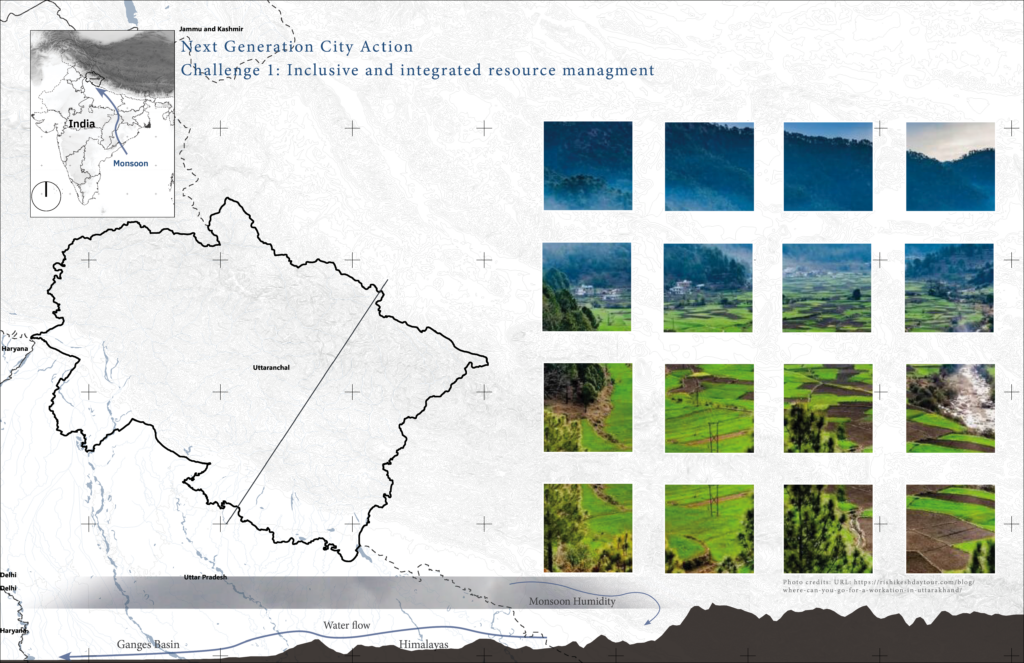
The rural culture, stories and worldview became intertwined with the landscape which they are still part off. This landscapes shapes the way it inhabitants move around and develope thru time his own cultures.
As part of this innovation program we as R.E. Lab team have based our proposal around the journeys people go throughthe territory in a daily basis to access water.
As the World Bank states: for many villagers, particularly women in India, obtaining fresh water for domestic use meant traveling distances of over 1.6 kilometers. Considering time and physical effort this requires, we thought about the potential of generating water intake spaces as communal landscape oriented spaces for interact between humans and nature.
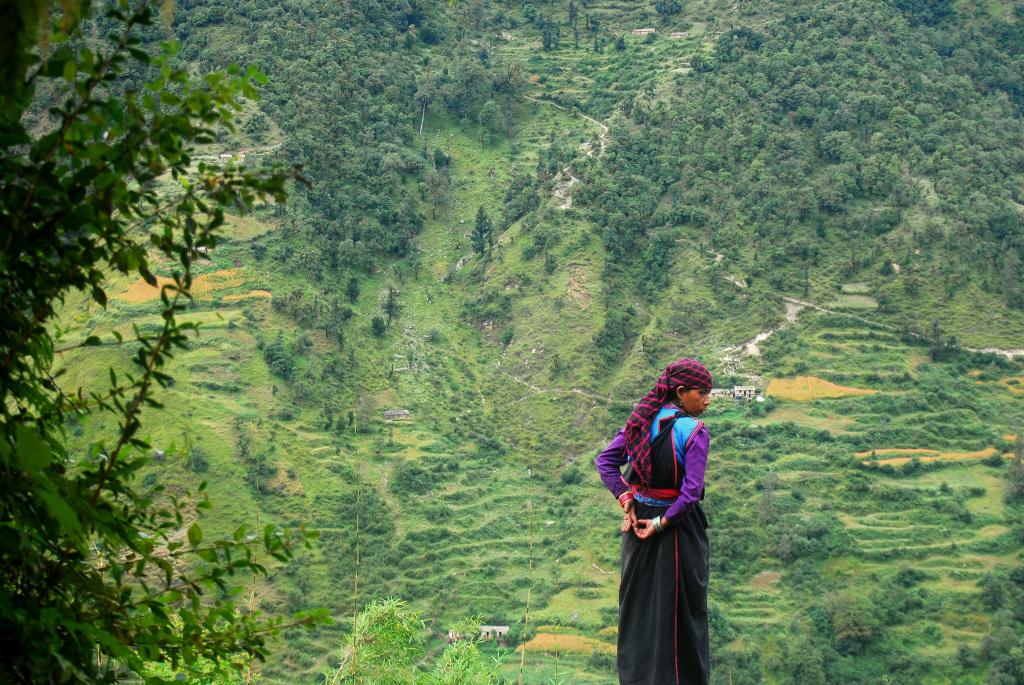
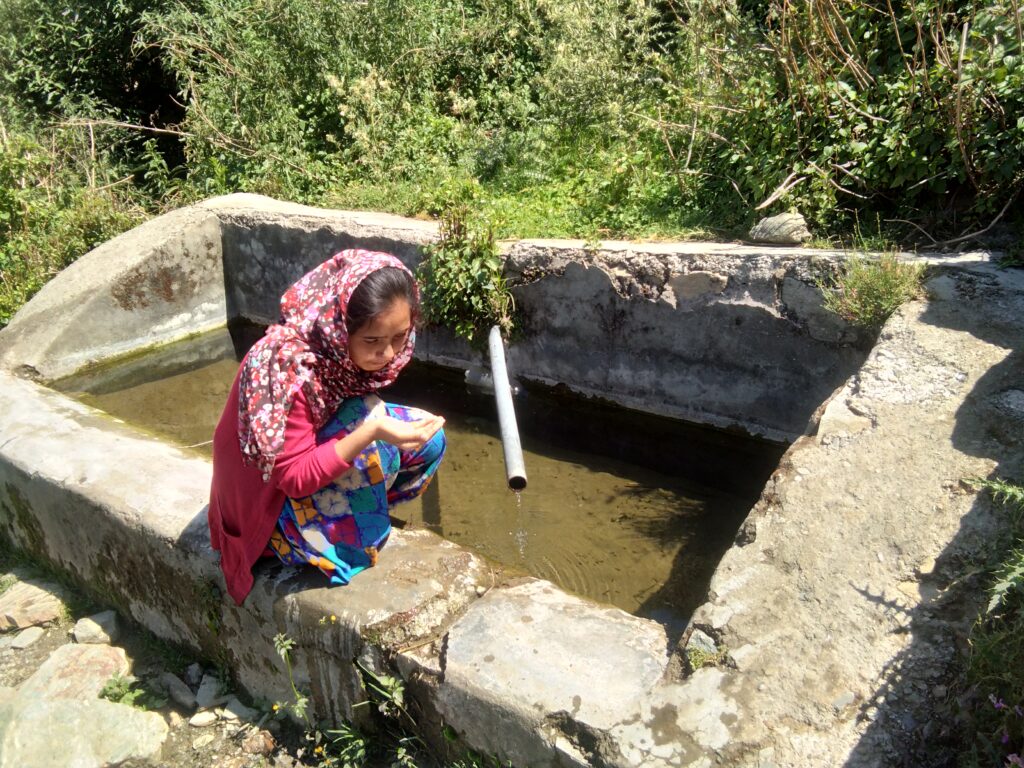
Solution
The general idea arises from a multidimensional perspective where water resource is the catalyst for community integration. This vital element will strengthen the roots to the rural territory, seeking to mitigate the processes of migration to urban areas. This approach will provide clean water for people, attractiveness to daily journey, educational spaces for infants and women, recreational and economic spaces for feasibility of the intervention.
Filter tanks
The physical intervention is centered around permanent water streams from where water can be pumped using its own force to tanks of 20,000 liter capacity for filtering. Each tank can provide water for more less 363 people daily, and it’s scalable to adjust to the needs of any specific community. The proposed materials area wooden based solutions from local source to reduce the impact of the infrastructure and avoid the excessive cost of the construction. This feasible technology would reduce the maintenance over cost and generate water interdependency for communities.
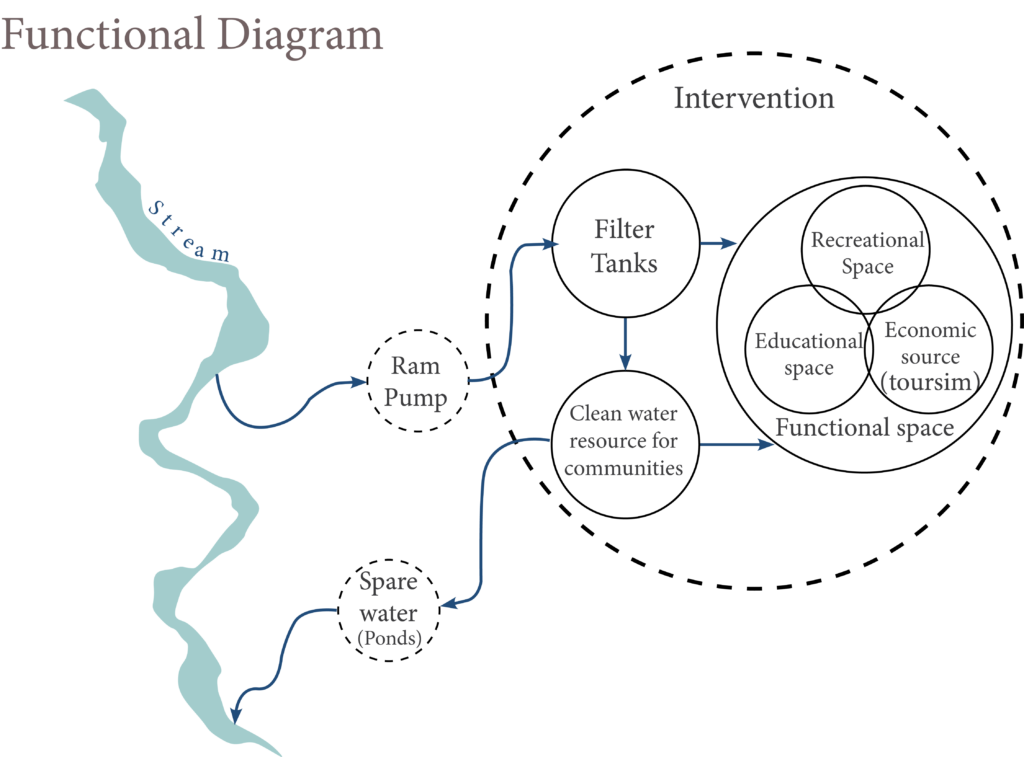
Around this infrastructure there would be open spaces, rooms and ponds to be used as space for educational information about the water resource. It’s a fully recreational and educational open space for meeting and relaxing for users, particulary women and infants. This prototype is dynamic, it can be set depending of the mobility and dynamics of each territory, the water flow and the needs of users.
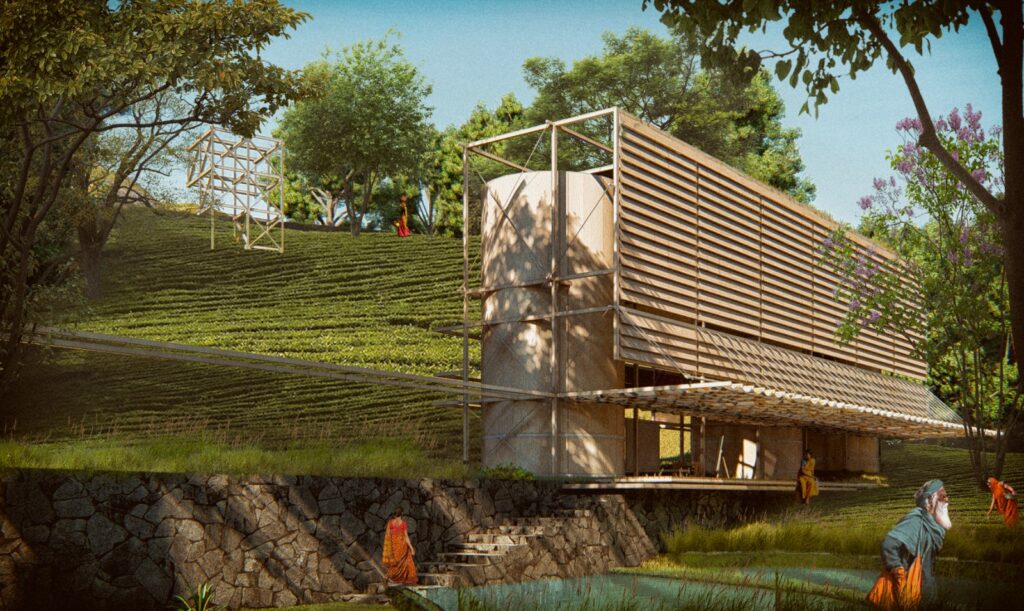
Educational spaces
As mentioned above women are the main users of this water source points, as well, litteracy rates between 15 years and older, shows a gap between male and female about 19.6%,(male literacy 78.9%, female 59.3%) (UNESCO UIS, 2011). This water source required spaces, will promote a dynamic and pedagogical intervention, from educational rooms, to ponds and water streams around to have a environmental education.
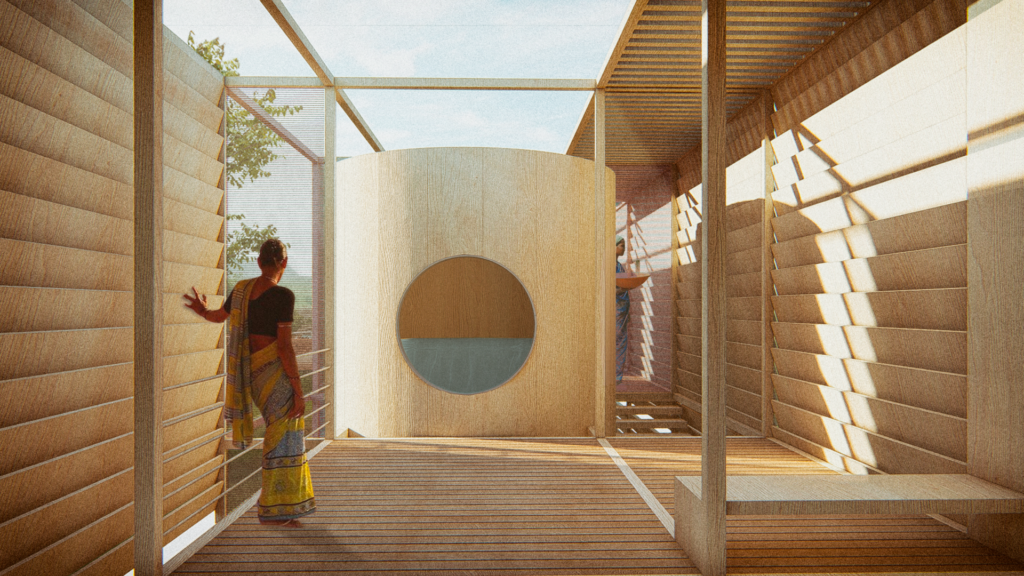
Recreational spaces
The surrounding of the intervention, there will be recreational spaces, where water and nature is the main element of the landscape. This areas will hold furniture to rest and encourage interaction between users, the spare water from the tanks will create elements as ponds that will promote an ecological succesion of the landscape.
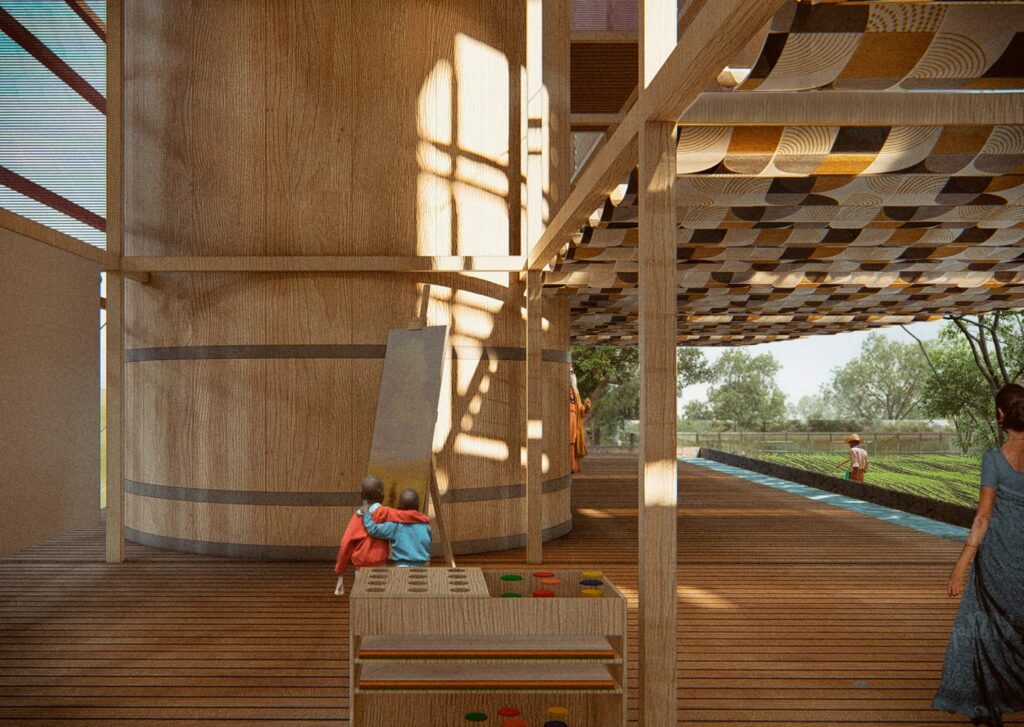
Economic spaces
As Uttarakhand is a touristic destination because of his natural landscape richness and due to its openness to the landscape, touristic activities could be supported in this installation to enhance de local culture as gastronomy, hike points and local handicrafts, generating income to the community and enhancing the rural culture.
Bussines Model
Due to its natural elements and architecture, this architectural piece would be an attractive to tourism, and enhance the Uttarakhand state as an strategic area for sustainable and social tourism. This strategic areas would be part of the touristic meeting point, promoting the interaction between locals and tourist.
The social impact would be supported by the educational and economic development of the interventions, focusing in public utility.
The main benefactors of this initiative would be local communities as it supplies daily needs. Bringing this infrastructures could also be adapted to peripheries with lack of urban services.
Team and Partners
It’s financing could take part of many interested partners, from governmental strategies as well as university programs or corporate social spend.
The Water For Welfare initiative from the Indian Institute of Technology Roorkee and the Springshed Development in Sikkim- A CCA-NER Project where inspirational examples from where our proposal could add value to the already existing social network for climate adaptation.
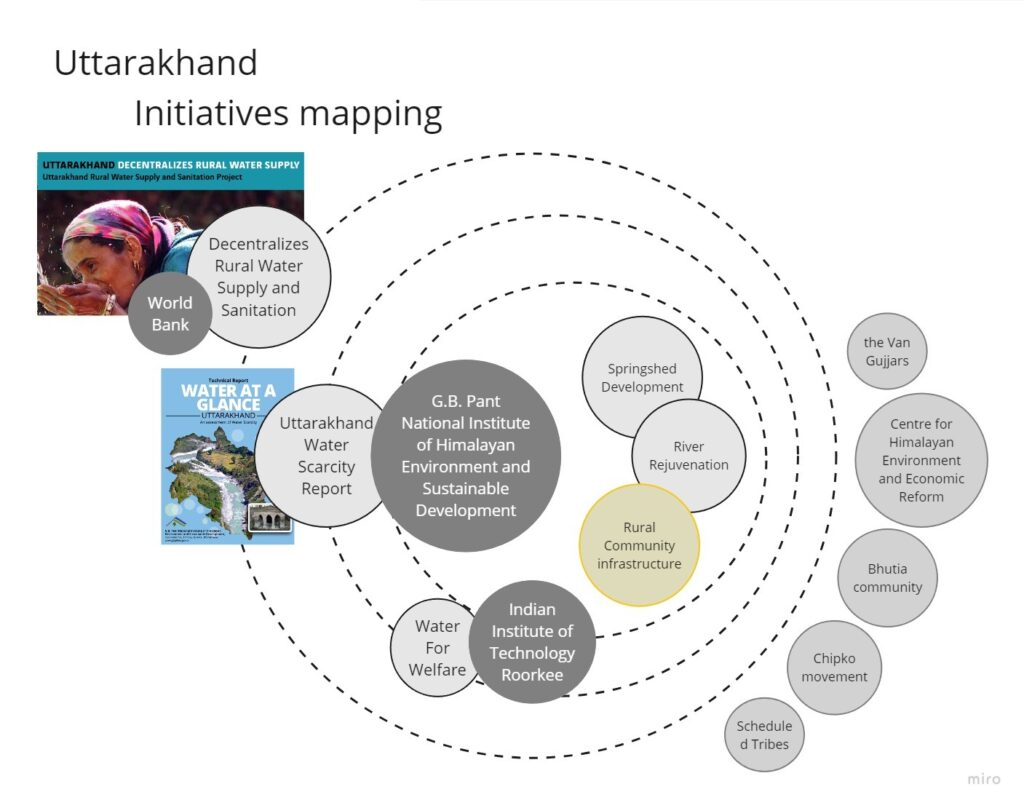
R.E. Lab Team
Melisa Villalón
[email protected]
Pedro López
[email protected]
David Tapia
[email protected]
References:
- UNESCO Institute for Statistics. URL: https://uis.unesco.org/en/country/in
- Rainforest Alliance. (2021). Advancing the Human Rights of Rural People. URL: https://www.rainforest-alliance.org/insights/advancing-the-human-rights-of-rural-people/
- Water Information Management System. URL: https://india-water.gov.in/wims/login.xhtml
- ODEPA. (2013). Oficina de Estudios y Políticas Agrarias. URL: https://www.odepa.gob.cl/wp-content/uploads/2013/11/ficha-india.pdf
- Centros de Aprendizaje de las Aldeas en Uttarakhand, India. Instituto de la UNESCO para el Aprendizaje a lo Largo de Toda la Vida. (Last update: 19 Marzo 2018.) URL: https://uil.unesco.org/es/caso-de-estudio/community-learning-and-development-0/centros-aprendizaje-las-aldeas-uttarakhand
- India Water Resources Information System. URL: https://indiawris.gov.in/wris/#/
